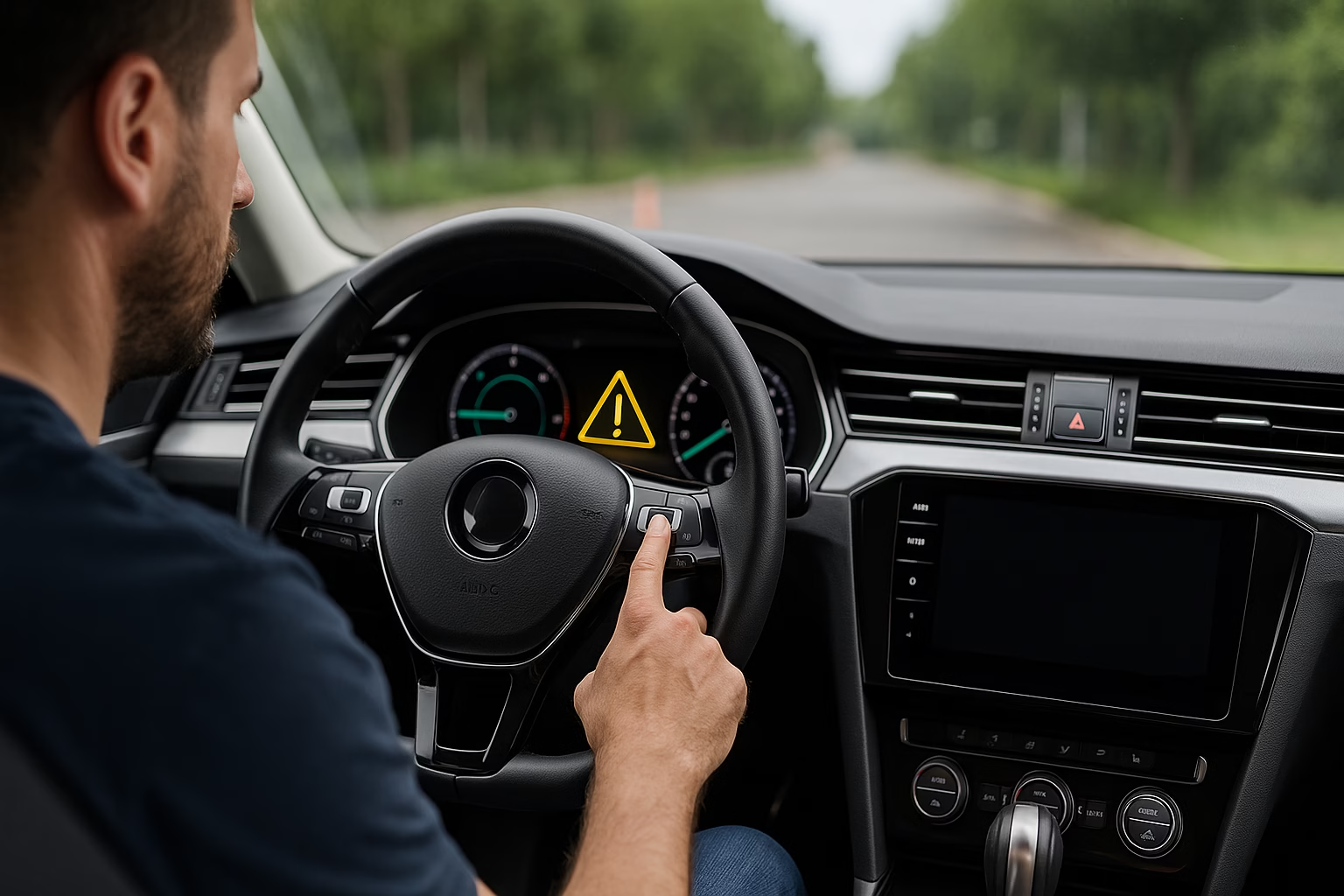Advanced driver assistance systems (ADAS) have transformed modern motoring, making it easier to stay in your lane, maintain a safe following distance and avoid unseen obstacles. These features are designed to support you, not take over, but many drivers make mistakes when using them. Misunderstandings or overconfidence can actually reduce safety and cause frustration. Here are the top five mistakes drivers make with ADAS and how you can avoid them.
- Relying too heavily on the technology
It can be tempting to let adaptive cruise control and lane keeping systems do the work, especially on long highway drives. Drivers sometimes treat these aids like an autopilot, taking their hands off the wheel or focusing on their phone. This defeats the purpose of assistance: sensors and software have limits. Radar may not detect a stationary object ahead, and cameras can struggle with faded lane markings or heavy rain. To avoid this mistake, treat ADAS features as extra eyes and hands, not replacements for your own. Keep your hands on the wheel and eyes on the road. Be ready to brake or steer at any moment. - Not reading the manual or understanding the system settings
Every manufacturer’s system behaves a little differently. Some allow you to customise the distance at which adaptive cruise control follows the car in front, while others automatically slow for corners. Lane centring assistance may only activate above a certain speed or require clear lane markings. If you hop in and press buttons without knowing what they do, you might be caught off guard by an unexpected intervention or alert. Spend a few minutes reading the driver’s manual or watchng a demonstration video. Learn how to turn systems on and off, adjust their sensitivity and interpret the dashboard symbols. Knowledge builds trust and helps you get the most from these features. - Neglecting sensor maintenance
ADAS relies on cameras, radar and ultrasonic sensors positioned around your vehicle. Dirt, snow, dead insects or Neglecting sensor maintenanceaccessoriaintenancees like bull bars and bike racks can block them and cause systems to shut down or give false alerts. Even a small windscreen chip in front of a camera can distort the view and affect lane keeping. To avoid these problems, clean camera lenses and radar covers regularly, avoid mounting aftermarket equipment where it could obstruct them, and repair windscreens promptly.aintenance - Using assistance in the wrong conditions
ADAS features are designed for specific situations. Lane following assist is calibrated for well-marked roads at moderate speeds, while adaptive cruise control expects consistent traffic flow. If you engage lane centring on a winding country road with faded lines or turn on adaptive cruise in heavy rain or thick fog, the system may disengage suddenly. Likewise, automatic parking sensors can be confused by snowbanks or tall grass. Always consider the environment before activating a system. If the road is poorly marked, visibility is low or you’re towing a trailer, drive manually and focus on the fundamentals. - Skipping calibration after repairs
Many drivers are unaware that sensor alignment can be knocked out by seemingly minor incidents. A low-speed bumper tap, a windscreen replacement or a suspension repair can all shift a camera or radar module out of position. When that happens, the vehicle’s computer may make incorrect assumptions about the road environment, leading to poor performance or constant warning lights. The solution is a professional calibration performed by a qualified technician with the right targets and diagnostic tools. If your car has been in the shop or you notice any warning indicators, schedule a calibration check. It’s a small investment in safety.
Using ADAS effectively comes down to balance: trust the technology, but don’t become complacent. Understand how each feature operates, keep your sensors clean, and know when conditions call for old-fashioned driving skills. Regular maintenance and calibration will ensure the technology performs as intended.
ADAS relies on an array of cameras, radar modules and ultrasonic sensors positioned around your vehicle. Dirt, snow, dead insects or accessories like bull bars and bike racks can block them. When sensors are obstructed, systems may shut down or give false alerts. Even a small windscreen chip in front of a camera can distort the view and affect lane keeping. Make a habit of gently cleaning camera lenses and radar covers when you wash your car, and avoid mounting aftermarket equipment where it could obstruct them. If you’re unsure what each sensor looks like, our detailed guide to features like rear cross traffic alert explains typical sensor locations and why keeping them clean imisportant.

Hiran Alwis is an automotive lecturer and ADAS specialist with over 15 years of experience in diagnostics, advanced safety systems, and technical training. He founded ADAS Project to help everyday drivers and workshop technicians understand and safely use advanced driver assistance systems.
